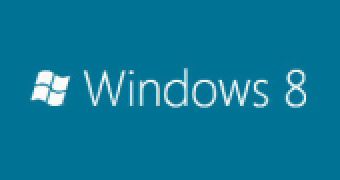Windows 8 will not be a hardware hog, but quite to contrary in fact, it will be designed to play nice with existing systems today, the hardware capable of running Windows 7 or Windows Vista. It used to be that major new iteration of Windows evolved at the same pace as the hardware universe, so system requirements would suffer dramatic increases from version to version.
Microsoft broke the mold with Windows 7, and it’s still broken as the company is readying Windows 8.
“Windows 8 won’t require any more hardware oomph - memory, disk space graphics, etc. - than Windows 7,” revealed Steven Sinofsky, President, Windows and Windows Live Division earlier this week at the D9 conference.
Lee Stott, Academic Evangelist at Microsoft UK, responsible for Faculty Connection and MSDNAA within the UK also confirmed this piece of information:
“Windows 8 will not require any specific enhancement to hardware in terms of memory, disk space, CPU than Windows 7 and exciting for the UK Academic space is Windows 8 will run on Intel, AMD and ARM based chips.”
Here are the minimum hardware requirements for Windows 7, just to get an idea of what it will take to run Windows 8:
“1 gigahertz (GHz) or faster 32-bit (x86) or 64-bit (x64) processor; 1 gigabyte (GB) RAM (32-bit) or 2 GB RAM (64-bit); 16 GB available hard disk space (32-bit) or 20 GB (64-bit); DirectX 9 graphics device with WDDM 1.0 or higher driver.”
Still, there is one piece of hardware that customers will want to own and use in concert with the next version of Windows, and that’s a new graphics card.
Windows 8 will bring with it an overhaul of the graphics technology, which with Windows 7 saw the introduction of enhancements such as Tessellation, Multi-Threading and DirectCompute.
Windows 8 will only take DirectX to the next level. However, at this point in time, as is the case with many other details related to the next iteration of Windows, there’s no information on the successor of DX11 from Microsoft.
The software giant has yet to say what version number it will slap on the next generation of DirectX, although, if I were to bet, I’d say it will be DirectX 12. But this is speculation on my part and should be taken as such.
Users that want to take advantage of the next generation of DirectX will need not only Windows 8, but also a graphics card designed specifically for the enhancements of this new technology.
Customers that will not want to upgrade their current graphics card, will still be able to run Windows 8, but not also to enjoy all the DirectX enhancements that the platform brings with it.
Windows 8 is also likely to kick up a notch the Windows Experience Index Score. The top value in Windows 7 is 7.9, Windows 8 will take that to around 9.9 or 10.9. But don’t believe for a second that you’ll be able to achieve this with the minimum system requirements, and without the latest and best hardware available on the market.

 14 DAY TRIAL //
14 DAY TRIAL //